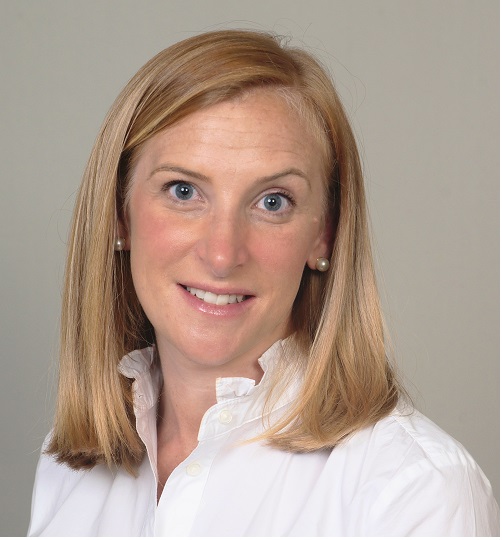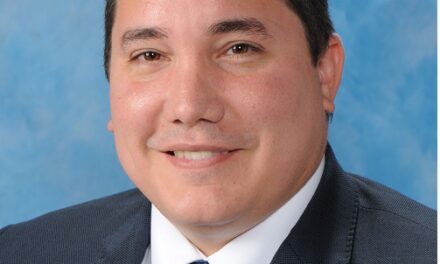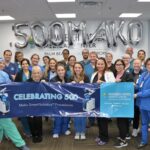By Daniel Casciato
Work-Related Musculoskeletal Disorders (WRMSDs) are painful injuries affecting the muscles, nerves, ligaments, and tendons of up to 90% of sonographers and other users of diagnostic medical sonography, according to the Society of Diagnostic Medical Sonography.
Aside from the lasting personal toll, sonographer injury intensifies workforce shortages, which can cause unexpected operational and financial challenges for an ultrasound department. An injured sonographer’s direct and indirect costs have been estimated at $771,500 for employers, which includes worker’s compensation, the average cost of medical expenses, lost revenue and recruiting a new or temporary sonographer.
An injured sonographer can be detrimental to institutions and clinics facing financial strain and lack of workforce readiness due to COVID-19, notes Jennifer Diaz, an Account Executive in the Equipment Sales Department of Med-Lab, an Advanced Partner of Siemens Healthineers in South Florida.

One of the biggest causes of WRMSD is patient obesity. It is the most significant barrier to practicing ergonomic scanning techniques according to a recent publication on the ergonomic scanning techniques for sonographers. Although equipment position changes and modifications of work postures can reduce injury risk, one factor in which sonographers have no control over is patient body habitus. Sonographers often need to exert excessive transducer pressure while scanning to provide diagnostic-quality images of obese patients.
“A main key trend in ultrasound technology is a lack of diagnostic imaging quality for obese patients,” says Diaz. “This is due to a lack of depth in transducers, and it is leading to another key trend – high occurrence of injury for sonographers. Due to lack of depth, sonographers need to apply extra pressure to the abdominal area of obese patients, which leads to a high incidence of shoulder, hand, and wrist pain.”
Throughout a sonographer’s career, the additional force required by traditional transducers will have a cumulative negative impact on the arm and shoulder muscles. When this force is added to the muscle firing required to maintain arm abduction or excessive reach to the patient, the injury risk increases significantly.
“When speaking with ultrasound experts, we hear time and time again that as patients get larger, they are challenged to get reliable and diagnostic images in an ergonomic and economic way,” says Diaz. “The deeper the ultrasound signal needs to penetrate; the more attenuation occurs resulting in image quality degradation and sometime results in an inconclusive image or repeat exams, sometimes in another modality.”
The ACUSON Sequoia, the flagship ultrasound system from Siemens Healthineers, is able to address this challenge.
“The ACUSON Sequoia seeks to solve this problem by powering the patented and industry exclusive Deep Abdominal Transducer (DAX), enabling unprecedented imaging of 40 cm depth through an advanced form of Multi-D beam formation,” says Diaz. “This level of penetration is a 30 percent improvement compared to conventional ultrasound. This novel approach enables the DAX to obtain clinically relevant information on high body mass index (BMI) patients when conventional transducer technology fails.”
In an ergonomic assessment by Sound Ergonomics, an analog pull-push force gauge by M&A Instruments, Inc., was used to provide a quantitative estimation of the amount of transducer pressure exerted while scanning. The DAX transducer required approximately 70 percent less force than the conventional transducer on a large model patient. Using the ACUSON Sequoia with DAX transducer can help to reduce the transducer pressure and decrease muscle strain when scanning high BMI patients compared to conventional transducer technology.
A patient’s varied physical characteristics and user dependent variabilities can negatively impact a clinician’s ability to deliver an accurate diagnosis.
“With the ACUSON Sequoia, Siemens Healthineers provides users with a solution to confidently image varying patient types, including those with high BMI,” notes Diaz. “In addition, it enables powerful automation in each major mode to reduce user variability and deliver high quality imaging with no user interaction. In order to address these challenges, ACUSON Sequoia was built from the ground up with a new architecture called BioAcoustic imaging technology; designed to deliver more image clarity and penetration than the conventional ultrasound system.”
The ACUSON Sequoia is also equipped with AutoDoppler technology. Immediately upon freeze, AutoDoppler will automatically optimize relevant Doppler parameters with no user interaction and all those parameters, including the scale, can be adjusted in post-processing.
Finally, the ACUSON Sequoia also has the advantage of being early in its product lifecycle. According to Diaz, this helps to maximize return on investment as there will be a pathway of sustained innovation and upgradability for years to come.
“It’s about confident imaging in the most challenging cases,” Diaz says. “Our DAX transducer is just one example of how the ACUSON Sequoia can help deliver diagnostic confidence often limited by conventional technology. Another major focus is on reducing ultrasound variability. Powerful automation helps to reduce variability amongst users and improve image quality with no user interaction. Remember, ease of use not only pertains to the control panel, buttons and probe placement; but also, the ease and ergonomics of acquiring the image. ACUSON Sequoia ushers in a new era in ‘ultrasound ergonomics’.”
For more information, visit med-lab.com.


























